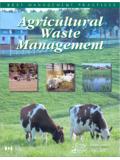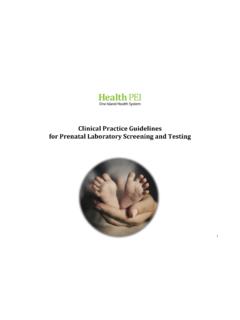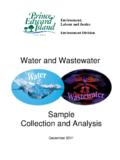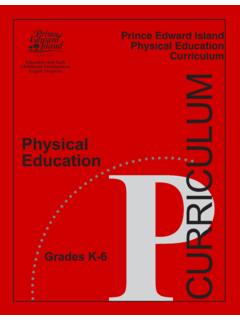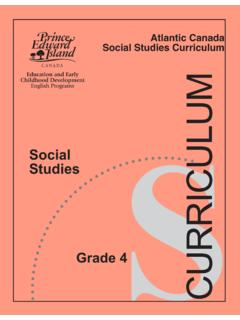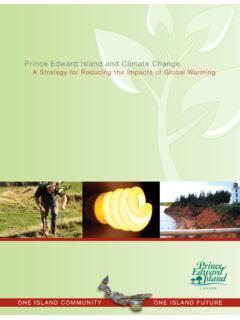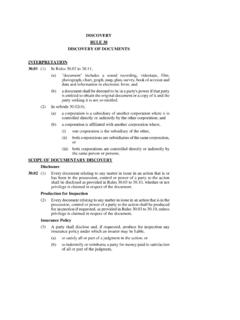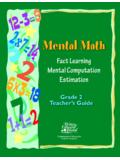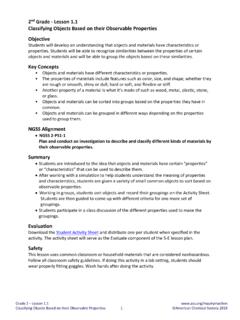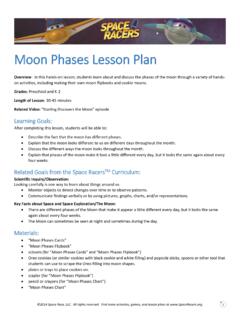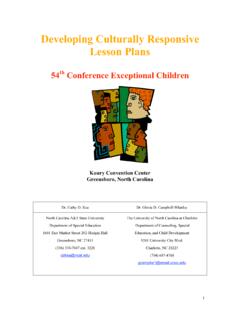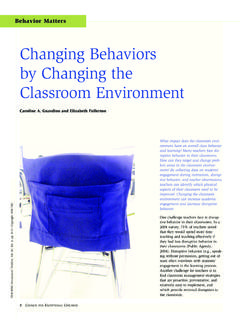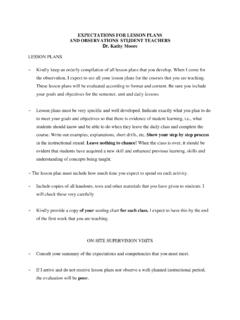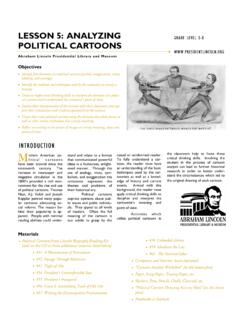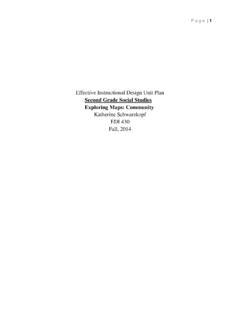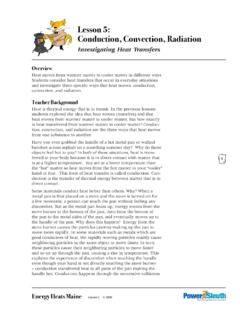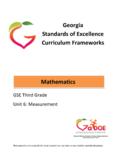Transcription of Educating Children about Autism in an Inclusive Classroom
1 Educating Children about Autism in an Inclusive ClassroomVianne Timmons, PhDMarlene Breitenbach, MSEd, BCBAM elissa MacIsaac, MEd(c) Educating Children about Autism in an Inclusive Classroom2 AcknowledgementsThe researchers would like to thank all of the individuals who assisted inthis project. The Inclusionary Practices for Children with Autism SpectrumDisorders study would not been possible without the combined efforts ofthe University of Prince Edward Island, the PEI Department of Education,the project s advisory committee, school staff, and especially the generously gave their time, support, and knowledge to help withthis project. We have learned a great deal from their comments andexperiences. Thank Children about Autism in an Inclusive Classroom3 The StudyThe purpose of this project was to contribute to the knowledge andimplementation of best practices for Children with Autism .
2 The studyidentified current teaching and parenting practices in Prince Edward Islandwhich address the educational challenges and individualized needs ofchildren with Autism spectrum disorders in included settings. Researchers hope that the findings will directly influence services byreinforcing current best practices, providing specific suggestions for homeand school, and establishing directions for supporting students with ASD inthe future. The research findings were analyzed and summarized into a report. Thereport can be obtained by contacting Melissa MacIsaac, UPEI ResearchCoordinator, at (902) Children about Autism in an Inclusive Classroom4 Table of Contents5 Introduction7 What is Autism ?8 Supporting Inclusive Practice10 Educating Peers about Autism13 Helpful Skills to Teach Peers15 lesson Plan #1 - Introduction to Autism18 lesson Plan #2 - Student Brochure Presentation20 lesson Plan #3 - Similarities and Differences24 lesson Plan #4 - Respect26 lesson Plan #5 - Developing a Code of Conduct27 lesson Plan #6 - Knowledge Breeds Compassion: Research Project30 lesson Plan #7 - Video Presentation on Autism31 lesson Plan #8 - Language and Communication33 lesson Plan #9 - Learning Styles34 Class Project - The Friends Club: Encouraging Social Skills 38 References40 Appendix is Autism ?
3 (Handout)41 Appendix on Prince Edward Island46 Appendix Samples50 Appendix List51 Appendix Book List52 Appendix Book List53 Appendix Resource List54 Appendix Up Together Booklet58 Appendix for Kids!59 Appendix Are All Alike BookletEducating Children about Autism in an Inclusive Classroom5 INTRODUCTIONA research study, entitled Inclusionary Practices for Children with AutismSpectrum Disorders, was conducted by the University of Prince EdwardIsland in partnership with the Prince Edward Island Department ofEducation between 2001-2005. Teachers and educational assistants whowork with students with Autism were interviewed by researchers. These educators noted that the provision of more resources about autismspectrum disorders (ASD) would be extremely valuable. Researchers alsofound that providing peers with accurate information about Autism andinvolving parents in the education process can be research data collected from educators of Children with Autism onPrince Edward Island has been used to create this module.
4 Suggestionsand concerns shared by educators were compiled and summarized to helpproduce a useful resource for the Classroom . If you have a child with Autism in your class, this modulewill be helpful to objectives include:Psharing the information obtained from the current study tohelp inform teachers,Pproviding accurate information about Autism and related characteristics to teachers and peers,Pproviding teachers with suggestions about how to involveparents, andEducating Children about Autism in an Inclusive Classroom6 Pdesigning a teaching resource that is easy to use and requireslimited preparation activities in this module can be used to inform both teachers andpeers about Autism . This module also provides suggestions for includingparents in their child s of the materials needed for the activities are provided within thismodule.
5 You can supplement the activities with other useful resources youmay have available and adapt the lesson plans for your class. Whenconducting the activities try to incorporate both visual and auditorylearning strategies as this will benefit all the learners in your Learning! Educating Children about Autism in an Inclusive Classroom7 What is Autism ? Autism is a developmental disability that affects the normal functioning ofthe brain. Autism is present from birth and has an affect on how anindividual learns. It is usually diagnosed by 3 years of age and continuesthrough adulthood. Individuals with Autism often have difficulty withcommunication skills, social skills, and reasoning. Symptoms of Autism vary widely and may include: repetitive use ofobjects, inability to communicate clearly, resistance to changes in routine,and difficulty with social interaction.
6 Since symptoms of Autism varywidely, it is often referred to as a spectrum characteristics include: lack of eye contact, social aloofness,difficulty with expressing needs verbally, repetition of words or phrases,and responding differently to sensory input. It is important to keep inmind that behaviors change over time as the child develops and learns. The term Autism Spectrum Disorder (ASD) is often used to refer tochildren diagnosed with:' Autism 'Asperger s Syndrome'Pervasive Developmental Disorder Not Otherwise Specified (PDDNOS)These diagnoses reflect varying degrees of severity in relation has not yet been a specific cause identified, although autismappears to have a genetic basis. Specialized support, training, and, inparticular, early intervention can help give individuals with Autism the toolsneeded to lead meaningful and productive lives.
7 Refer to:Powers, M. D. (2000). Children with Autism : A Parent s Guide. (2 Ed).ndBethesda, MD: Woodbine Children about Autism in an Inclusive Classroom8 Supporting Inclusive PracticeInclusive education means that every child has the opportunity to learn inhis/her neighborhood school. All Children are welcomed into the school andlearn together in a regular Classroom . Inclusive education concentrates on implementing best practices forchildren with special needs within the regular Classroom . Within inclusiveclassrooms, all Children have the chance to interact with and learn fromtheir environments can provide opportunities for Children with autismto increase their social interactions and in turn improve their social skills. Interacting with peers gives students with Autism a chance to practicecommunication skills, develop friendships, and see how peers behave inday to day situations.
8 Research has demonstrated that peers can help teach social skills tostudents with Autism . In order for this to be successful, activities have tobe appropriately structured, training has to be made available to peers,and teachers have to actively prompt and reinforce the interactionsbetween students with Autism and peers (Wagner, 1999). Peers also benefit by having students with Autism in the Classroom . Whenpeers of Children with Autism are educated about Autism , and are given anopportunity to act as peer tutors/buddies, they learn acceptance andempathy, act as role models, and become more aware of individualstrengths and weaknesses (Wagner, 1999). In this section, a variety of lesson plans are included to help teachersEducating Children about Autism in an Inclusive Classroom9 Inclusion works best when: 1.
9 Administrators are supportive,2. good communication and collaboration exists between home and school, 3. teachers have received specialized training,4. student progress is documented and maintained, and 5. peers are educated. There is a good knowledge baseabout Autism in this school and wework as a [Teacher] I've learned so much from him and sohas the teacher joy of itall. The acceptance of the other kids ispowerful stuff. We all benefit by buildingtolerance in our class and in oursocieties. [Teacher]educate peers about Autism as well as raise awareness about specialneeds in general. As the teacher, you will have to judge the maturity levelof your class and adjust the class discussions and activities to meet theircomprehension level(s). Please remember that uncensored questions andhonest answers can often help students gain understanding and to:Wagner, S.
10 (1999). Inclusive Programming For Elementary Students with , TX: Future Horizons, Children about Autism in an Inclusive Classroom10 Educating Peers about AutismCollaborative PlanningAs with any student, Children with Autism benefit most when teachers andparents are on the same page and efforts in the home and at school aremutually supportive (Organization for Autism Research, 2004). Beforeplanning a lesson , the teacher should first meet with parents to discussthe possibility of a class lesson about Autism . It is important to get parentinput, and if appropriate, input from the student with Autism as well. Share why you feel the lesson would benefit the peers and the student;what is the expected following discussion points will help to ensure that everyone involvedis comfortable with the your child know that he/she has Autism ?
